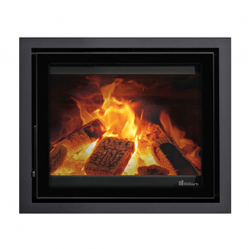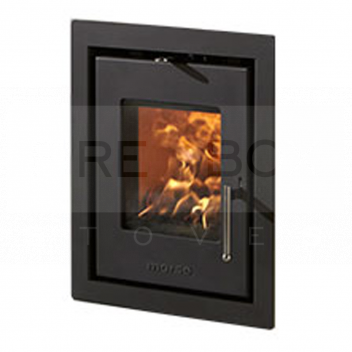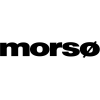Technical Details
| Product Title | Morso S81 Inset Stove, 4kW |
|---|---|
| Product Keyword | Morso S81 Inset Stove, Morso Woodburner, 4kW Inset Stove, S81 Multi-fuel Stove, Compact Fireplace Insert |
| Energy Efficiency | A+ |
| SIA Ecodesign Ready | Yes |
| Output (Nominal) | 4kW |
| Output (Maximum) | 5.6kW |
| Smoke Control (DEFRA) | Yes |
| Boiler Stove | No |
| Colour | Black |
| Flue Outlet Size | 125mm - 5in |
| Fuel | Multifuel |
| Height | 585mm |
| Width | 368mm |
| Depth | 343mm |
| Nominal Output (Range) | 3kW - 5kW |
| Width (Range) | 300mm - 400mm |
| We Like! | its Tertiary air Supply & Wide Glass Door |
| Height (Range) | 500mm - 600mm |
Product Description
Morso S81 Inset Stove, 4kW
- 4kW heat output - ideal for small to medium-sized rooms
- Efficient inset design - integrates seamlessly with modern interiors
- DEFRA approved - suitable for smoke controlled areas
- Cleanburn technology - eco-friendly with reduced emissions
- Airwash system - keeps glass clean for a clear view of the flames
- Cast iron construction - durable with a timeless appearance
- Convenient ashpan - easy to access and clean
- Multi-fuel capability - can burn wood or smokeless fuels
- Easy to install - fits into standard fireplace openings
- Contemporary design - sleek and minimalist to suit modern homes
File Downloads
Reviews
Inset Stoves > 5kW and under Inset Stoves

5kW and under Inset Stoves
Inset stoves are designed slightly differently to freestanding stoves in that they are designed to be built into the wall or chimney breast, leaving only the front of the appliance visible. They are a great option for rooms where floor space is very limited, or for creating a more minimalistic look. Often with large glass windows to enjoy the full effect of the flames, these stoves are just as efficient as a 5kW or under freestanding model but without the same demand for space.
Our extensive range of 5kW and under inset stoves will provide ample choice, regardless of the style or size required. We have a large variety of 5kW and under inset stoves including wood only and multifuel models, as well as portrait or landscape designs to help match the space available in your home. Our 5kW and under inset stoves are also available in modern or traditional designs, as well as some more neutral designs, allowing you to achieve the perfect focal point in any room.





